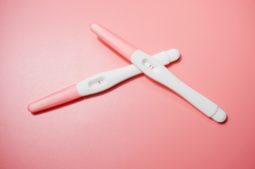
It’s a fact of life that the IVF process involves regular injections to administer the necessary medication. The hormonal drugs that they deliver are essential to the process, but that doesn’t make the prospect any more fun for those embarking on a programme of IVF. For those who have never been through the process, the sheer number of injections may come as a bit of a surprise. How painful are IVF injections? Not at all, not much, quite a lot… all of these are true, at different times, for different people.
In this IVI blog article, we set out to deliver the information you need to give you a well-informed approach to your planned IVF treatment. We set out the facts about how IVF injections are given and what the injection programme consists of, together with an evaluation of the pain potential of the different types of injection and some tips to keep any pain to a minimum.
How are IVF injections administered?
Most, if not all, IVF injections are self-administered. This is because the frequency and timing of the injections make this the only practical option to cause the least disruption to everyday life. For many people, particularly those working in a medical environment, this will be no more of a problem than swallowing a tablet. For others, particularly the unfortunate few who have a phobia of needles, the very act of self-administration can add to the anxiety and stress of the whole situation. Most people fall somewhere between these two extremes and so for them, while it doesn’t top the list of the most fun things to do, self-administration is manageable. Don’t worry, you are going to be given fully detailed instructions, demonstrations and moral support.
What is the IVF injection regime?
Day one of your treatment is the first day of your period, when the ovarian stimulation process begins. This is where the regime becomes quite intense, involving sometimes more than two injections every day for seven to ten days. During this time, the growth and development of the follicles are monitored through blood tests and ultrasound scans. The final stage of oocyte growth is also triggered with injection of This final injection is also self-administered and your medical team will instruct you on the exact hour that it should be done. Timing is particularly crucial here, but is also a vital factor in the whole stimulation period, and so clearing your schedule as far as possible to accommodate the regime will help with reducing any potential stress.
Even before the official day one of treatment, some stimulation protocols require the administration of infections in the previous cycle, after ovulation. These daily hormonal injections help to suppress your normal cycle and allow medical management of your cycle and ovulation once treatment begins. Depending on the stimulation protocol used, these drugs will be administered later, while the stimulation treatment takes place.
How painful are IVF injections?
It really does depend. For some people an injection is a simple matter and any slight discomfort is over within a few seconds. For others the pain can feel more severe and it can often be made worse by anxiety. It also depends on the type of injection. Sub-cutaneous injections, made into the layer of fat between skin and muscle, are the simplest and least painful. Intramuscular injections, in which a longer needle is needed to deliver the medication directly into a muscle, can be more painful for some, but not intensely so.
How to cope with any pain from IVF injections
Planning ahead and giving yourself time to prepare in a leisurely and calm manner is the most important thing you can do to reduce the pain potential. Other tips that people have found helpful are:
- Enlisting the help of a partner so that you can focus on relaxing and he or she can focus on giving the injection in the most efficient way possible.
- Varying the site of the injection, so that any residual soreness is not exacerbated by another injection right on top of it. With both subcutaneous and intramuscular injections, we suggest trying alternating the injection area (between the thighs or other muscle-dense areas such as the buttocks or upper arm) to give any bruising time to recover.
- Some people swear by arnica dabbed on the site (after cleaning with an alcohol pad) to minimise swelling and bruising.
- The application of an ice pack for several minutes before the injection can numb the area and reduce any pain sensation. Be sure to use the alcohol pad after the ice and before the injection.
Drawing strength from being well informed
When you decide to address your fertility problems through IVF, knowing exactly what to expect can help to give you confidence and strength. If you can keep your eye on the main goal, a successful pregnancy, it will help you to endure the passing pain and anxiety that are inevitable partners of the process you’re going through.
However, not all pain is physical and you also need to prepare yourself emotionally for the possibility of a failed IVF cycle. A single failed cycle may be overcome in the longer term, but there’s no doubt it can feel almost like a bereavement when it happens. Some women are keen to try again as soon as possible, others need some months to allow the emotional disruption to settle. At IVI, we offer a counselling service before, during and after treatment. One reason to feel optimistic, even in the face of disappointment, is the fact that at IVI, we have a clinical pregnancy success rate of 71.4% per embryo transferred, for women under 38 using their own eggs. So, while there are no absolute guarantees, the odds are on your side. If you need to know more about the whole IVF process, take a look at our video about IVF, or if you would like to talk about any aspect of the programme, do get in touch with us.





Comments are closed here.